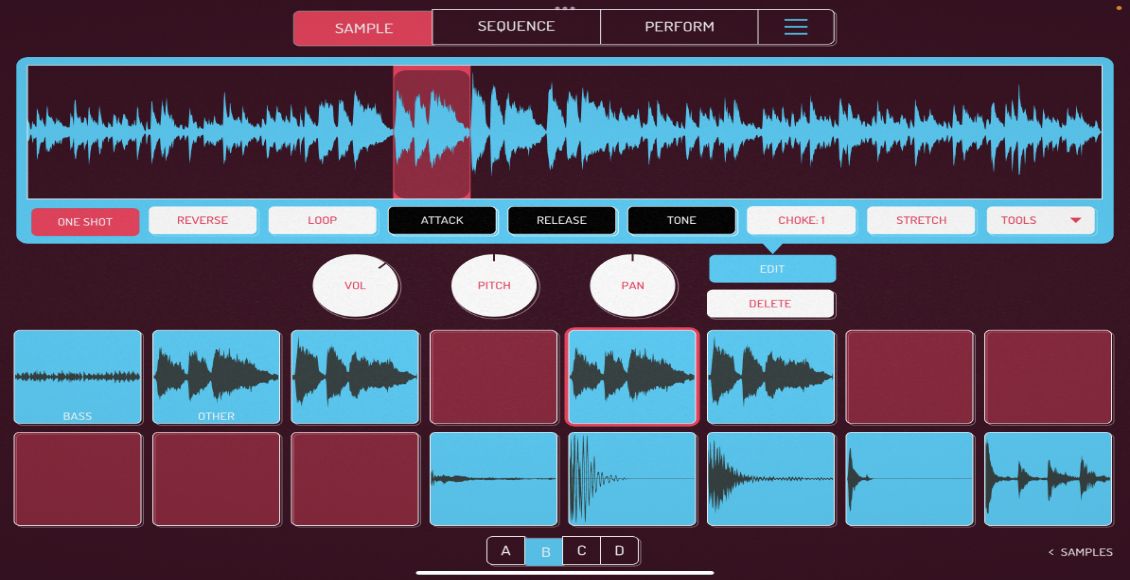M-Audio Torq has piqued the interest of a lot of digital DJs, many of whom are wondering if the oft-quoted “Serato killer” can live up to the buzz. Although nothing appears to be “killing” Serato anytime soon, there are lots of features intrinsic to Torq that are really worth looking into. Many of these tools, including “Snapshots” (or instant recall of various onscreen settings) can be used for dramatic and creative results. If you already own Torq or are just curious about what it has to offer, there are some powerful advanced features you need to know about. Without further ado, let’s look closely at one really cool detail you could easily overlook but that offers a big performance payoff.
TAKE THIS PARTY DOWNTOWN
Almost all of the DJ software out there offers the ability to lock the pitch, but few allow for the creative manipulation of pitch independent of tempo. Torq offers a simple, straightforward way of literally “playing” your music live by stepping between fixed pitch changes. The logical controller for this technique is, of course, a MIDI keyboard. Assigning your keyboard to control the key steps is easily accomplished using Torq’s handy direct MIDI mapping. Simply right-click on the desired onscreen function and move the MIDI control of choice to connect the two. When you assign a single MIDI key to control the “Key Transpose,” Torq automatically maps one octave of keys in each direction to change the pitch one semitone up or down. The time stretching does get a little messy with extreme changes but can be useful as a unique lo-fi effect when rhythmically employed. Here are a few specific performance applications of this simple but powerful tool.
First, immediately at the start of a big break, transpose the song down one full octave, or 12 semitones. Then, temporarily switch up to the root key (or nontransposed) for brief rhythmic moments, culminating in the eventual return to the track’s natural state. Not sure how far a full octave is? Here is a dummy-proof way to avoid making any mistakes: If you have a 2-octave keyboard like the M-Audio Oxygen 8, make the initial key you assign the center C (dead center white key). The furthest keys on each end of the keyboard will be exactly one octave up or down.
MELODY MAKER
Next, here’s a way to spice up a simple track: Many electronic songs, especially those in the minimal vein, like to sit on the root note with very little variance. Change it up by playing small melodic patterns in harmony with the song. Simple 3-note changes that move around the root seem to work best, but big dramatic walk-ups can also be cool, depending on the track. This technique works best when always resolving to the track’s neutral state and playing the changes on the downbeat every two or four counts. It’s easy to start messing up the song this way, so try not to get too fancy, and use your best resource — your ears.
Let’s take that idea further and change a song’s melodic pattern while mixing it over another track. That can get really unpredictable, so for best results, you may want to drop a short loop and play around with that. Try to drop the loop on a single-held note or a nonchromatic section. That way it will be easier to make it jell with the other track that is playing. You could get creative and loop a single note of a popular track, and then change around the melody as the new track comes in. Eventually, if your musical chops are good enough, you could even start to morph the original melody into the next one. Then the audience would truly not know where one song began and another ends.
ITSY-BITSY LOOPS
That small loop might get a little old, so let’s up the stakes and slowly shorten it into a micro-loop. One of my favorite intuitive inclusions in Torq is its loop-shortening feature. If you drop a 1-bar loop, for instance, clicking on the one bar again shortens the loop by two beats. Each subsequent click cuts the loop in half until you are left with a short micro-loop, which often becomes rhythmic white noise. Loops this small are usually nontonal, so playing the pitch will not have the same dramatic effect, but it will still help keep the sound fresh. The real value of such a short loop is when it’s used as bed of sound that can be transformed with a crossfader or sent in bursts to a delay.
Even that could lose its appeal quickly, so let’s really raise the bar and start working the turntables into the picture. Even though we are now looping a tiny section, you still have full turntable control over the sample, and the noise can be scratched just like the tone on a scratch record. Combining pitch changes with rhythmic cuts and scratching can yield compelling results.
Finally, let’s get Torq’s onboard effects in the mix and put the cherry on top. This might be a crazy-sounding suggestion, but try throwing on a beat-repeat in Send mode. Initially, the length of the beat-repeat is not important; you just need to put the send at about 60 percent. That will keep the basic micro-loop running in the background even while scratching, giving the scratches an overall tone you can continue to transpose with the keyboard. If you want to get really wild, work in a little basic synthesis by shortening the beat-repeat length to 1/256 or higher. At that speed, the tone begins to modulate with itself and can create some really wild sounds, all from just a few milliseconds of audio.










